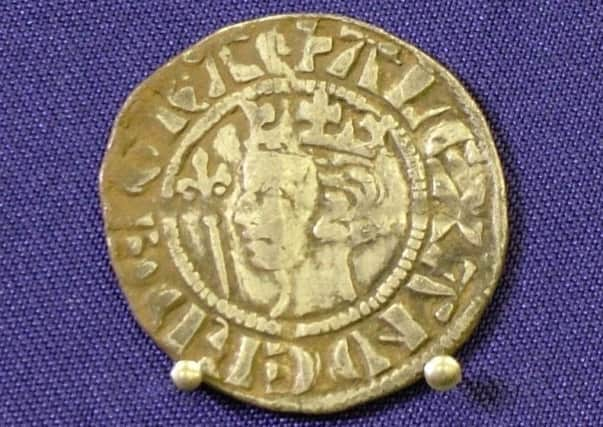Coin hoard was buried outside Lanark 700 years ago


For them, it wasn’t a relatively simple task of working out that the old tanner was now two-and-a-half new pence or 10 bob was now 50p.
The coins jangling in pockets or purses here in Clydesdale back around the time of William Wallace would be a baffling mixture of Scots, English, Irish and even Belgian currency.
Advertisement
Hide AdAdvertisement
Hide AdThis, of course, was during the Dark Ages when, notoriously, very little was recorded in writing. So how do we know all this? Well, it is mainly due to discoveries like the one made of a large cache of medieval coins which had been buried in a field on the outskirts of Lanark some time around the late 1340s and found two years ago.


The 41 coins of what is now called the Bonnington Hoard tells us a lot about everyday life around here all those centuries ago, and a little bit of historic detective work might even have revealed who buried the hoard and why.
The Lanark Museum Trust has just acquired the hoard, and before it went on public show at the Lanark Museum in the YMCA building on the Westport on Friday, Ed Archer of Lanark and District Archaeological Society, had spent months studying the ancient coins.
Sherlock Holmes-like, Ed startles you a bit by declaring the following: “They were buried in a hurry by someone who planned to come back soon to retrieve them.
Advertisement
Hide AdAdvertisement
Hide Ad“The reason he didn’t was because he probably died shortly afterwards. He was probably a farmer and he was possibly called Ballantyne.”


But how could he tell all this from 41 tiny coins?
“It was a metal detectorist who found the coins in a field at Bonnington which was once farmed by a family called Ballantyne.
“The coins were in a leather bag or some linen which has long since rotted away. This suggests they were buried in a hurry – panic even – and that, along with the dates of the coins, leads us to the late 1340s or early 1350s, when, in quick succession, the Black Death arrived in this area and massive political disruption broke out in Scotland.
Farmer Ballantyne, fearing for this fortune in the chaos, probably wanted his savings hidden for a short time until things settled down again, but something – the Black Death? – prevented him coming back for his money.”
Advertisement
Hide AdAdvertisement
Hide AdThe sheer variety of coins indicates the owner dealt with many different cross-border customers. At that fluid time in history, England started a few miles south of Biggar!
Only two of the coins are Scottish, from the reign of Alexander III in the 1280s.
There are two from Ireland and two of Flemish origin. All the rest are English, created at the then scattered royal mints in Bristol, Canterbury, London and Durham.
Ed added: “The face value totals only three shillings and sixpence or 17 and a half pence in today’s money.
Advertisement
Hide AdAdvertisement
Hide Ad“However, back in the 1340s, it would have bought you about 80lb of cheese, three sheep or two pigs.
“It would also have bought you three gallons of wine or enough ale to drown yourself in – 42 gallons to be exact.”
Perhaps the sudden intervention of the Black Death just spared Farmer Ballantyne from a more lingering end from liver failure!